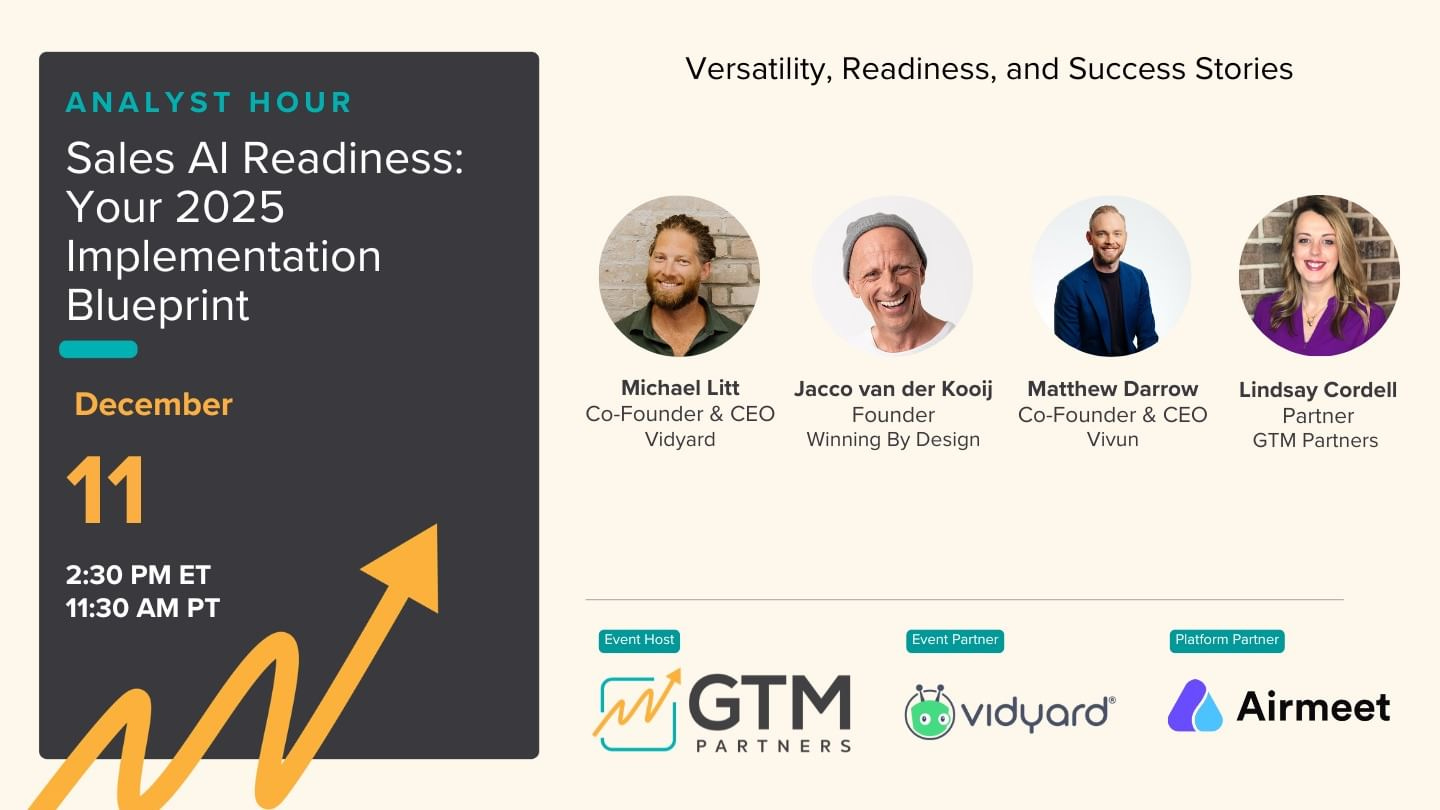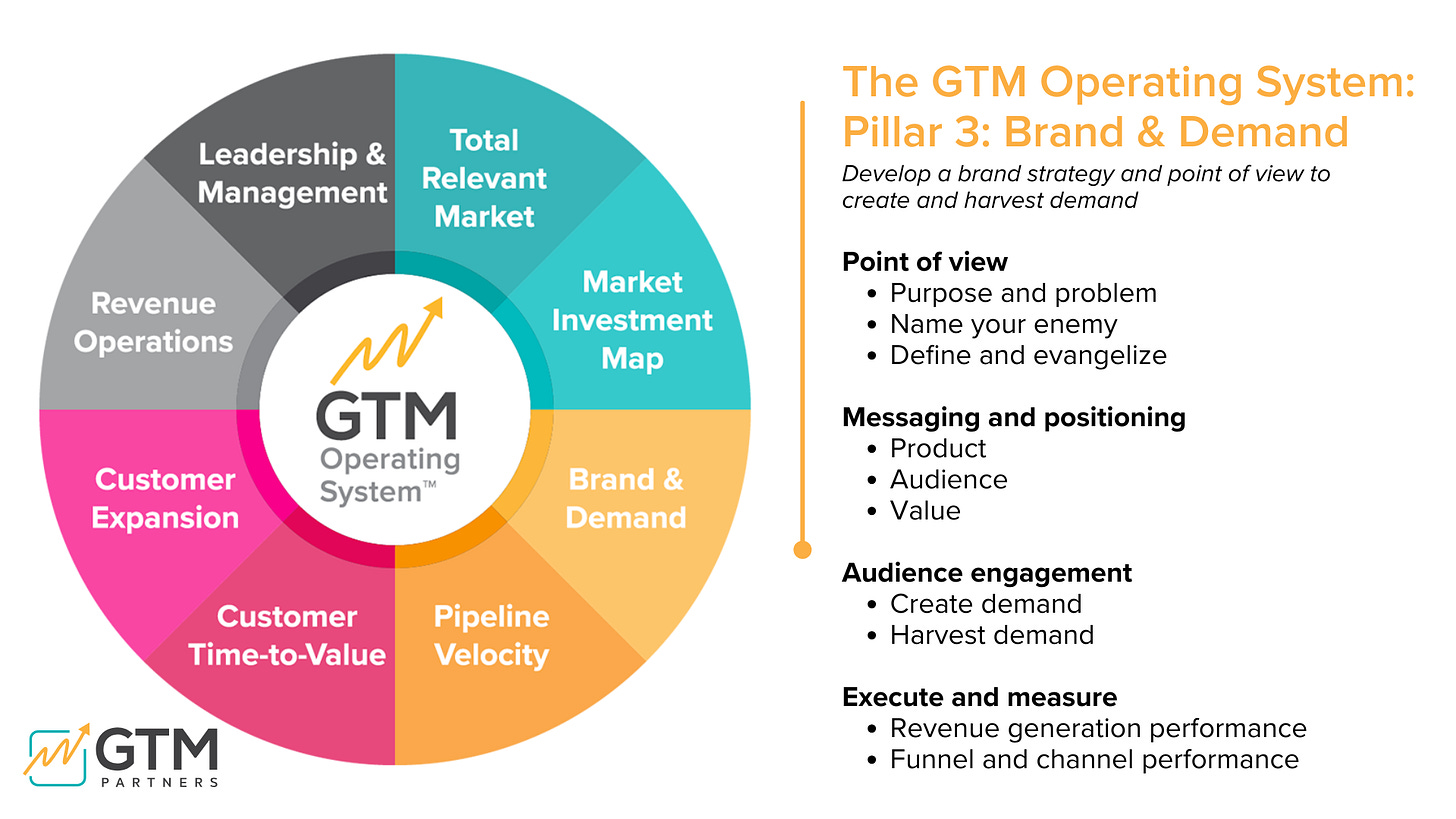Filters
How to Align Sales Comp with Your GTM Strategy in 2025
Thanks for being one of over 150,000 forward-thinking GTM Leaders who subscribe to this weekly research note.
This week’s edition includes:
GTM Research: How to Align Sales Comp with Your GTM Strategy in 2025
Spotlight: Congratulations to James Lamberti, GTM O.S. award winner!
GTM Partners’ Analyst Hour: Unlocking AI for 2025 Planning on December 11, 2024
Research: How to Align Sales Comp with Your GTM Strategy in 2025
Creating an effective compensation plan is crucial for aligning your go-to-market (GTM) strategy with the activities and outcomes you need from your team.
However traditional approaches to compensation planning often create misalignment, leading to inefficiencies and missed revenue opportunities.
Let’s explore how to develop a GTM-based compensation strategy that drives alignment, motivates teams, and supports your business objectives.
Understanding the Challenges in Compensation Planning
Whether you’re a seasoned pro or new to compensation planning, it’s important to recognize the complexity involved in aligning incentives across GTM teams. Questions like these often come up:
What is a good average quota attainment for sales reps?
Should inbound and outbound SDRs be compensated differently?
Should CSMs or demand gen teams have variable compensation?
How do you incentivize product teams in a product-led growth (PLG) environment?
These questions reflect a growing trend of spreading revenue responsibility across the GTM team.
While this approach offers significant potential, it also adds complexity, making it essential to balance clarity with strategic nuance.
The Four Golden Rules of Compensation Planning
To create a GTM-aligned compensation plan, follow these four golden rules:
Incentivize the Right Activities for the Strategy
Align incentives with the outcomes you need. For example, incentivizing CSMs to generate CSQLs might be appropriate for a PLG strategy but could be a distraction in other models.Keep It Simple for Employees
Compensation should be easy for team members to calculate. Complex GTM strategies might require sophisticated plans, but contributors must understand how their actions translate into rewards.Ensure Alignment Across Teams
Everyone should work toward the same goals. For example, marketing might be incentivized to drive inbound pipeline for SMBs, but if sales is focused on enterprise deals, misalignment will undermine success.Adapt to Strategic Shifts
If your GTM strategy changes, adjust compensation plans accordingly. Leaving teams on outdated plans risks misaligned efforts and diminished results.
Aligning Compensation with Strategy
A successful GTM strategy often includes multiple segments, products, and motions. Your compensation plan should reflect these variations. Consider this example:
Example Business Case
Products: Tried-and-true offerings and a new product line.
Segments: Velocity (fast-moving deals), enterprise, and mid-market.
Motions: Expansion-focused vs. net new customer acquisition.
Each product, segment, and motion has unique profitability, lifetime value, and sales cycle considerations. For instance, high-profitability enterprise products might require incentives for complex team selling, while velocity products benefit from rewards for rapid deal closures.
Incentivizing the Right Activities
Compensation planning should focus on driving behaviors that support your strategic objectives. Examples include:
Speed and Efficiency for Velocity Sales: Encourage quick deal closures and low-cost pipeline conversion to improve profitability.
Team Selling for Enterprise Deals: Incentivize collaboration between account executives, sales engineers, and post-sale teams to navigate complex, high-value deals.
New Product Traction: Pay extra for pipeline generation and process development in new markets, ensuring sales teams focus on less-established offerings.
By tailoring incentives to each segment and product, you can ensure that sales efforts align with broader business goals.
Quota Management for GTM Success
Quota setting is another critical area where traditional methods often fall short. Instead of simply dividing an annual goal among reps, consider a GTM-based approach:
Set Goals by Product, Segment, and Motion: Recognize that inbound reps, outbound reps, and account managers have different responsibilities and capabilities.
Incorporate Historical Data and New Initiatives: Account for past performance while factoring in the potential impact of new investments or changes in strategy.
Plan for Variance: Use buffers (e.g., 75-85% average quota attainment) to account for natural gaps in GTM performance, ramping reps, or unexpected challenges.
This method provides a more realistic, actionable approach to quota setting.
Balancing Individual and Team Performance
While individual performance is key, it’s important to consider the broader impact of each team member’s efforts. Use performance distribution graphs to identify:
High performers who may need support to reach even greater heights.
Underperformers who require intervention or reassignment to more suitable roles.
By analyzing performance across the team, you can make strategic adjustments to optimize results.
Final Thoughts
Go-to-market compensation planning is a powerful lever for driving strategic alignment and revenue growth.
By aligning incentives with your GTM strategy, simplifying plans for team members, and staying agile in the face of change, you can build a system that motivates your teams and supports long-term success.
Remember, the best compensation plans are not static. They evolve with your strategy, ensuring that your GTM efforts remain focused, aligned, and effective.
Do you need help with your GTM strategy and execution?
GTM Partners works with B2B companies who need help with GTM, whether you just need a few tweaks or a full reboot of your strategy.
We’re booking now for 2025 planning work, including:
GTM Assessment: Over 1000 companies have taken our GTM Assessment to build their GTM Strategy. Your team can take it here.
Advisory: We work one-on-one or with your entire GTM team to execute your plan using our proprietary GTM Operating System and the frameworks we’ve built to accelerate your growth. We work on a project basis for 4-6 weeks to fix your Total Relevant Market (otherwise known as ICP), POV, Market Investment Map, GTM Scorecards and more. If you need more than a one-off project, we can also help you through a total GTM transformation.
GTM Certification: We offer Go-to-Market certification for individuals, teams, and agencies using our proprietary GTM Operating System.
We’d love to chat more about your needs and how we can help.
Spotlight: Congratulations, James Lamberti!
James Lamberti has used the Go-to-Market Operating System time and time again as an operator, as a CMO, and now in his role as Head of GTM for Georgian, a Toronto-based PE firm.
Having implemented the GTM O.S. in and across many organizations, we recognize James as one of the most forward-thinking GTM Leaders for 2025.
Analyst Hour THIS WEDNESDAY: Unlocking AI for 2025 Planning
Is your sales team truly ready for AI? Beyond the hype and tools, successful AI implementation demands proper preparation and strategy.
Join us for a focused 60-minute session featuring real demonstrations and practical insights from sales and AI pioneers.
You'll walk away with:
A framework to assess your sales team's AI readiness
Common implementation pitfalls and how to avoid them
Live demonstrations from Vidyard and Vivun
Critical success metrics and ROI tracking methods
Featured Experts:
Lindsay Cordell (Host) - Partner, GTM Partners
Michael Litt - CEO, Vidyard
Jacco Van Der Kooij - Founder, Winning By Design
Matthew Darrow - CEO, Vivun
How’s your December going so far? We are gearing up for an exciting 2025 and hope you are too!
Love,
the GTM Partners Team






